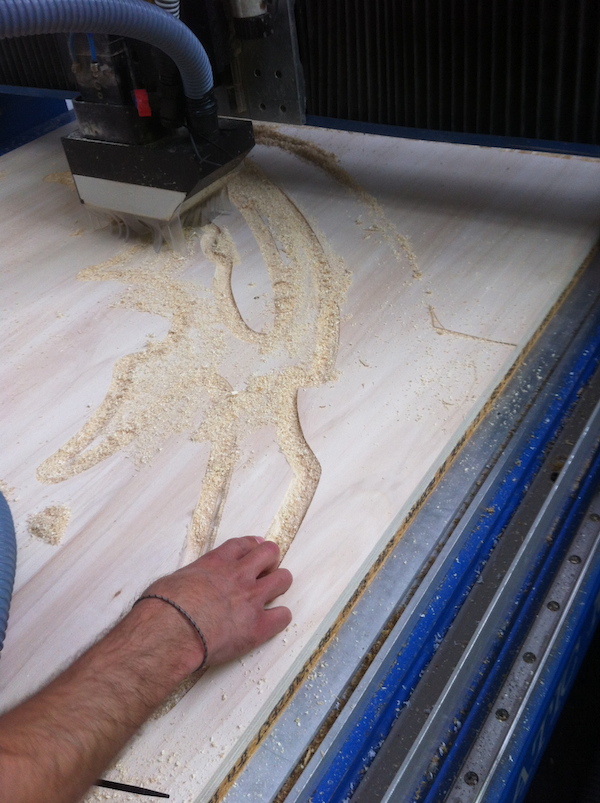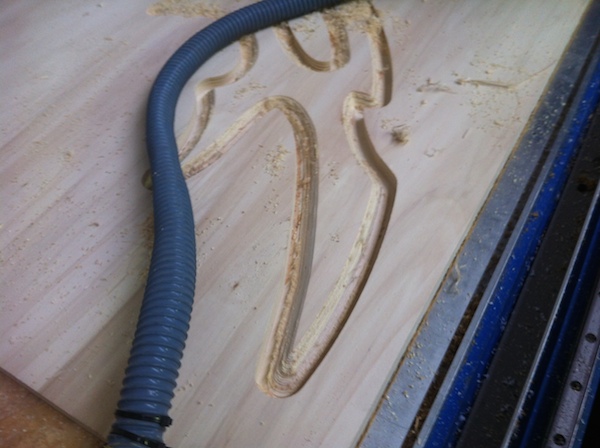Computer controlled machining
This week assignment is about making something big, bigger than a chair. For this week I decided to do something big but also fun, something which might not necessarly be useful but that I couldn't find in any store even if I was able to buy it.
What better than a Klingon sword? For those who don't know them yet, Klingons are one of the extraterrestrial species depicted in the Star Trek series. They also have a really big following here on planet earth, so big that someone even took the time to write an English to Klingon Dictionary!
In the show, Klingons are great warriors, and they love weapons. The most used Klingon weapon is the Bat'leth, an edged weapon with a curved edge. This is very popular, and replicas available for collectors around the world.
But the first Bat'leth has a special story, and is called the Sword of Kahless, named after the Klingon who invented it. As Wikipedia says:
"According to Klingon mythology, he formed the blade by dropping a length of his hair into some lava from inside the Kri'stak Volcano, then cooling, shaping, and hardening it in the lake of Lursor".
This initial sword was used for uniting the Klingon homeworld so it's quite special. As you might see from the pictures (the first one is the Sword of Kahless) it differs from the common Bat'leth in the shape. This is the one I want to build.

Source: Maximilian Reininghaus for Wikipedia - CC Licensing
Designing the Sword of Kahless
Being so popular, it wasn't difficult to find the exact specifications for a replica of the Sword of Kahless.

With this blueprint I used Illustrator to create a vector shape of the sword in SVG, so it could be used for creating a realistic 3D model in Rhino.
The actual modeling was done in Rhinoceros 3D, using the imported Illustrator curve as a path for tapered extrude, with an angle of 60 degrees.
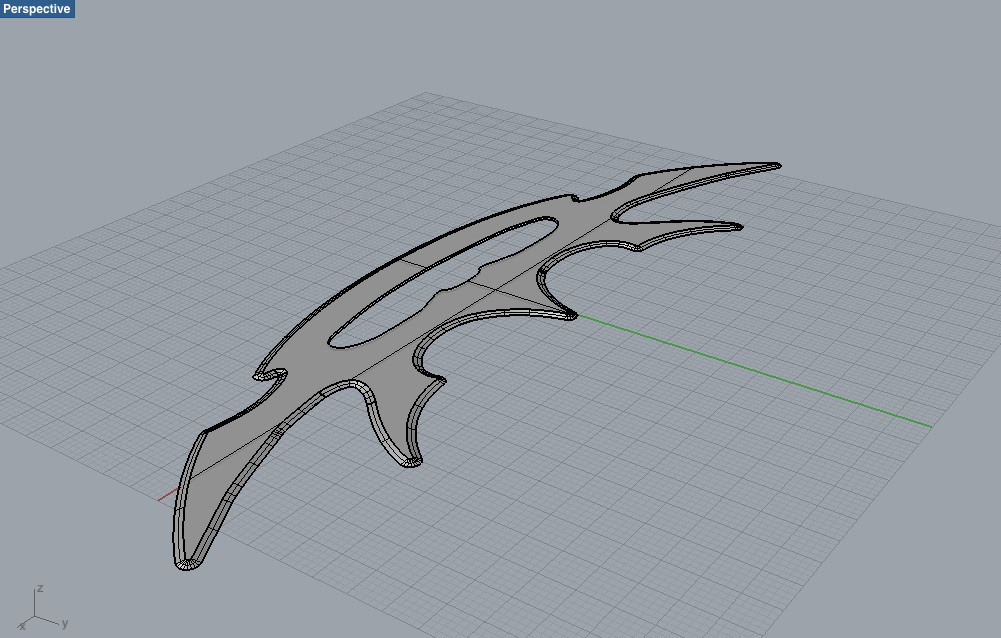
Finally to test out how the final shape would look like, I produced an STL file in Rhino and printed a small version of it in PLA plastic:

Preparing the model
I was lucky that the idea of creating the sword allowed me to make a model which is essentially flat on the bottom. But even taking into account it was not trivial designing the correct paths for milling such a curved surface, including the holes in the middle of the model.
For creating the milling path I used the RhinoCAM plugin for Rhino, allowing to create CAM paths directly into the modeling software. All the milling was done using a MECAMATIC MF 150 with 10mm flat bit, as this was the sharpest one available in the MioCugino FabLab in Milan that hosted me for this project. They took this industrial machine as broken from a factory and restored it redoing all the electronics and hooking it up a Linux computer as controller, running LinuxCNC.
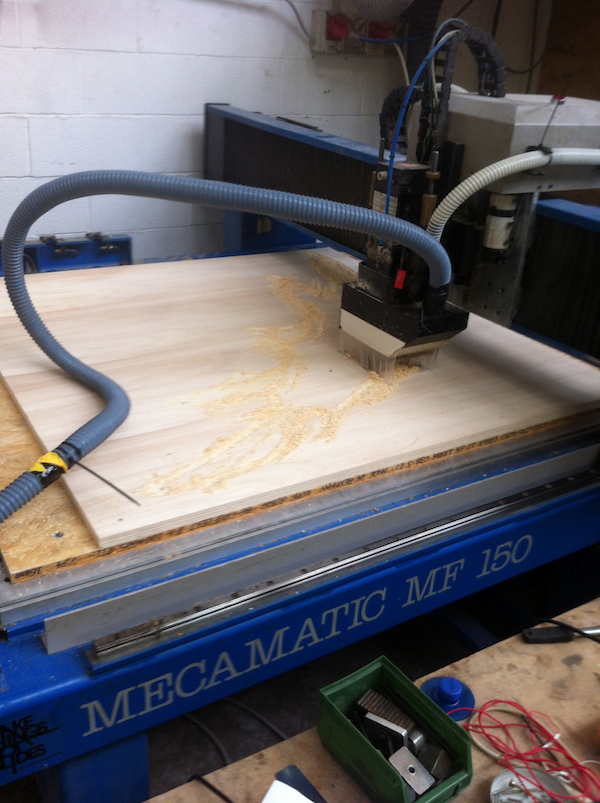
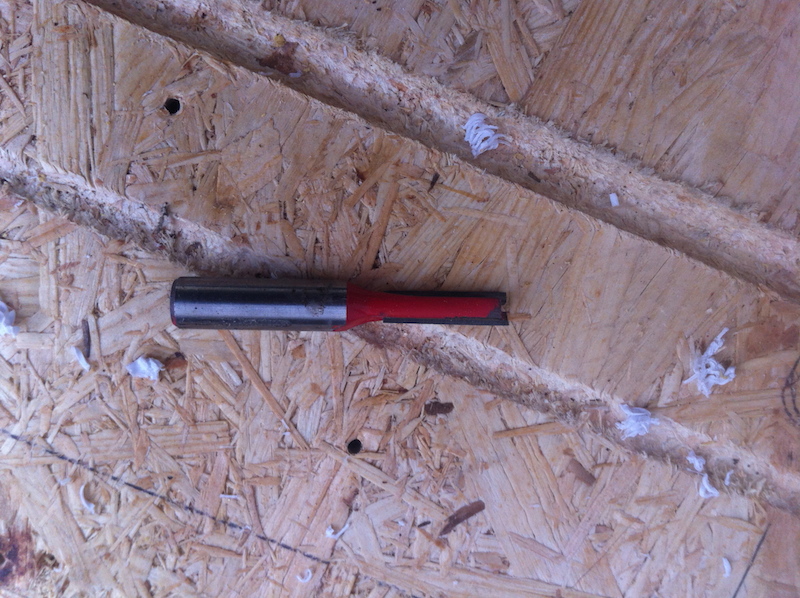
RhinoCAM allows to define many passes, in a similar way of what I already experienced on the Modela Player. The workflow then allows to export everything to GCode, in this case run by LinuxCNC software controlling the actual Mecatronic CNC machine.
The milling plan included:
- a first horizontal roughing pass, defining the overal shape out of the wood block:
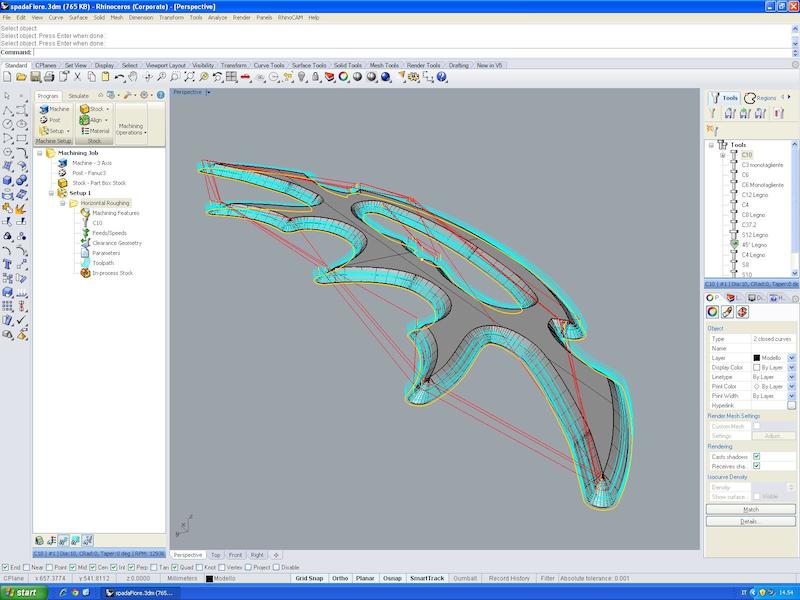
- a second horizontal finishing pass, creating the tapered side on the sword
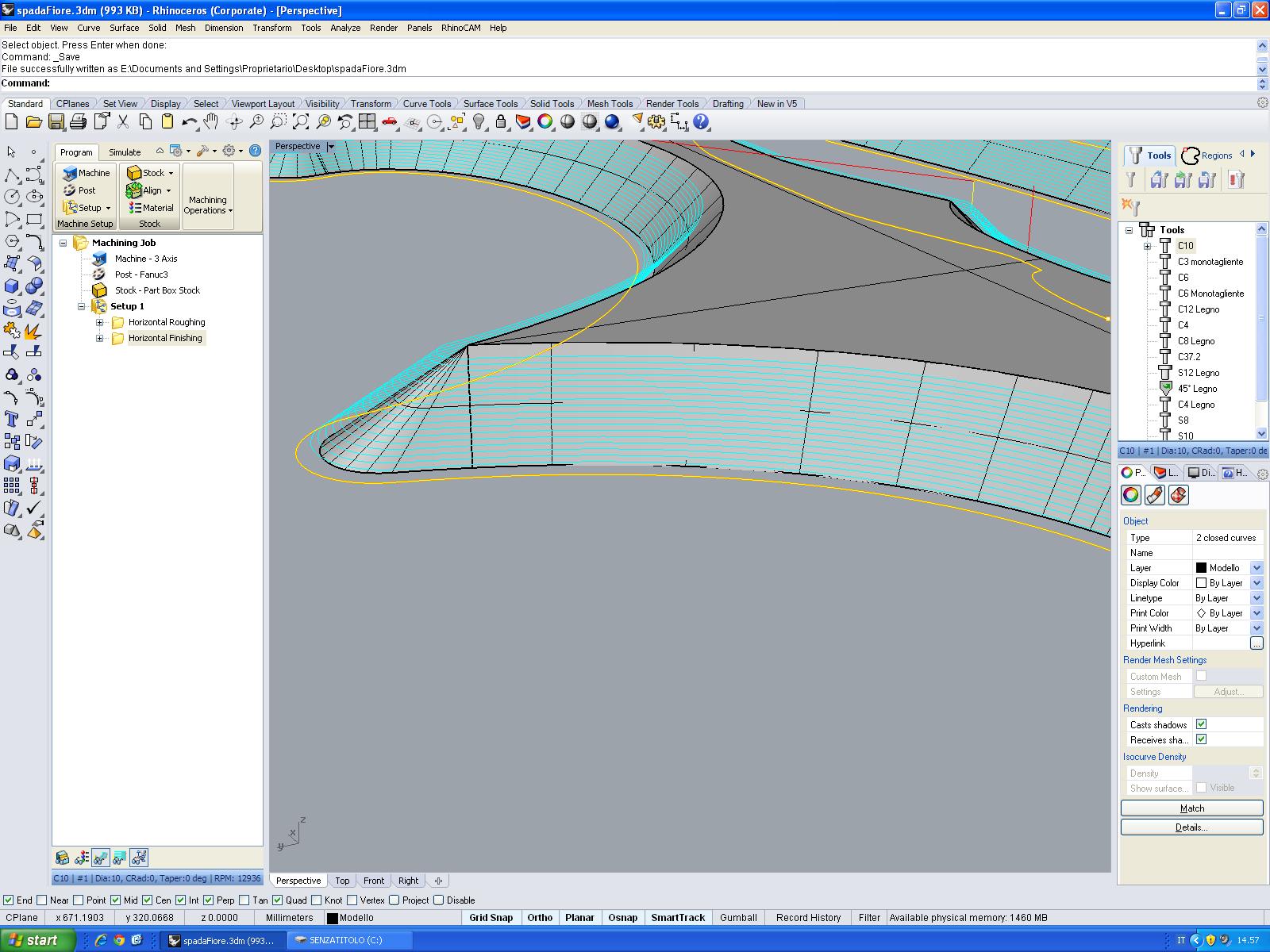
- a third and fourth finishing pass, this time smoothing out the surface with a series of cuts at 1mm distance one from the other, and adding "slots" to keep the piece from detaching while completing the finishing
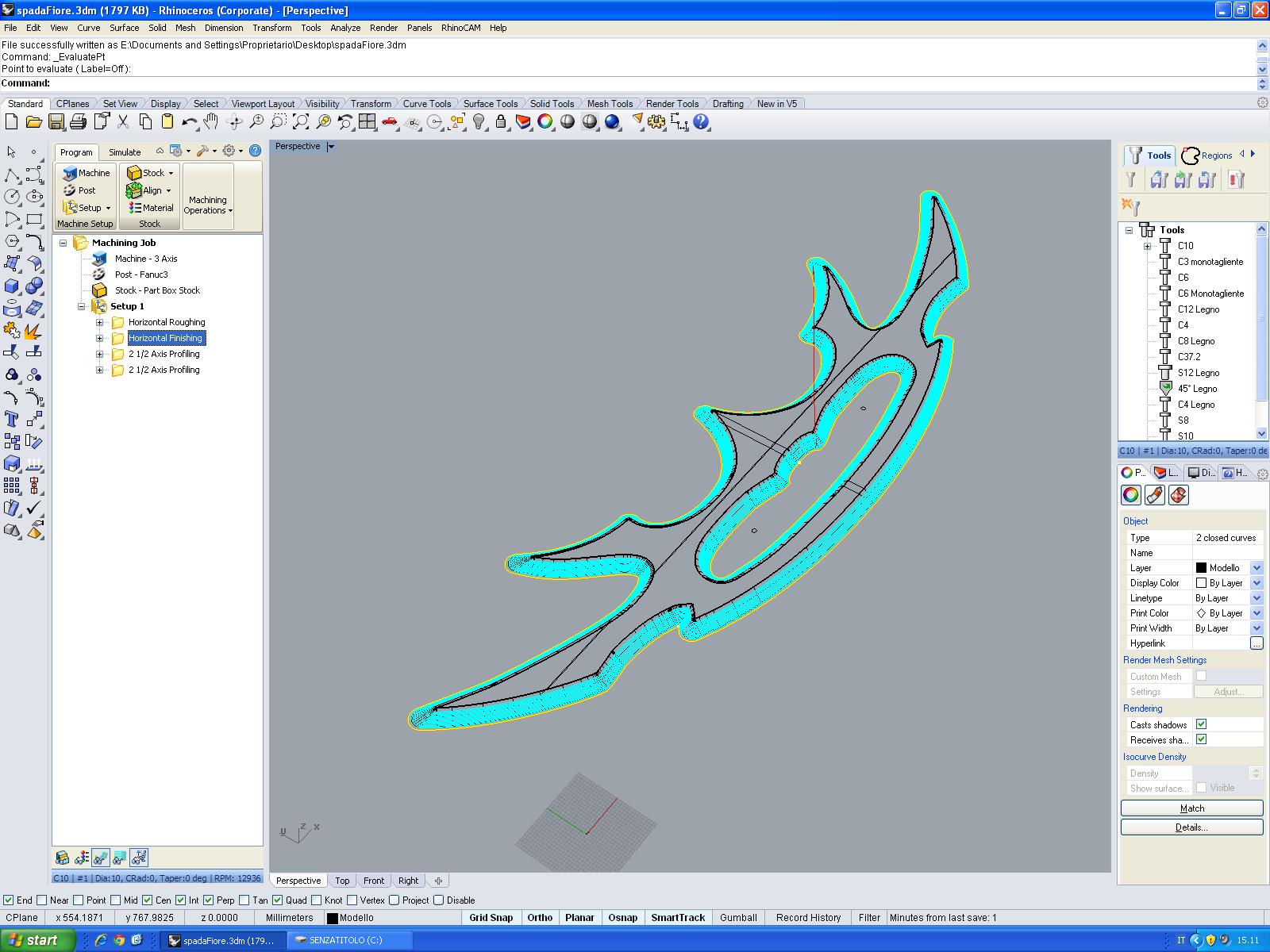
Cutting process
Before starting the cutting plan, the machine z-axis needed to be zeroed, as usually done with most of CNC. In order to do that a small bit of metal was used to give a fixed height to the axis. All of this process was monitored by the LinuxCNC controller.

Then the planned paths were executed. The process went on without a glitch and the machine was very fast compared to the Modela!
Something wrong
Overall the process was quite smooth, and lasted around one hour. At the end the piece wouldn't be detaching from the table, thus a new pass was needed for doing so.
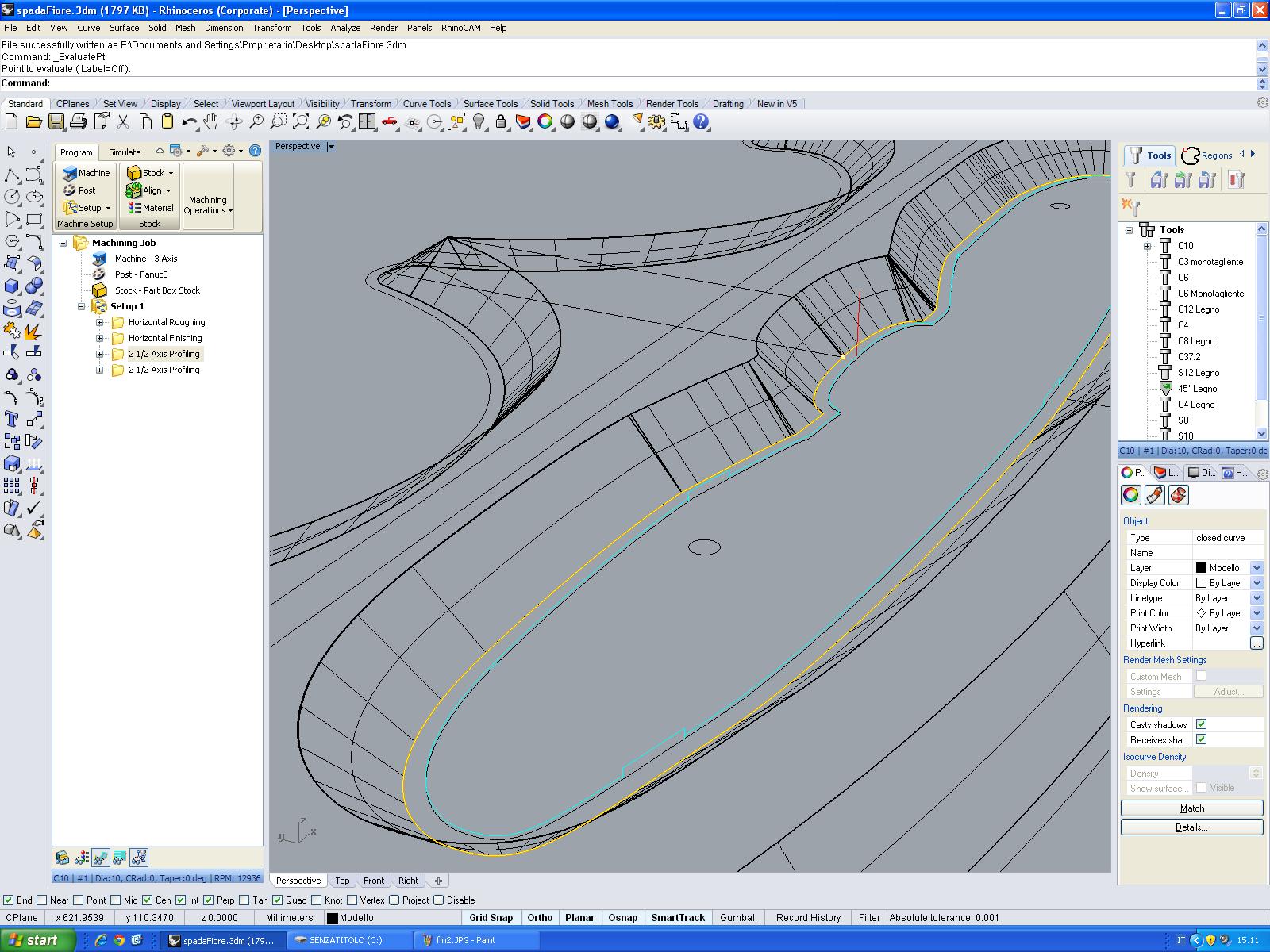
The worst problem was that the Sword was not finished, and it required a good two hours of (manual) sanding to acquire the final shape. If I had used a few more hours of milling time and smaller ball bits probably this wouldn't have been necessary. This unfortunately was not possible for time constraints, as my train was leaving and I couldn't spend more time in the lab.
Even if needing some finishing milling process result was quite impressive at the end, leaving me really happy, holding for the first time a Klingon sword in my hand:

Conclusion
After the milling session I completely sanded the sword and cleaned up the surface as much as I could. My plan is now to spray paint it and add some vinyl-cut stickers on top of it for recreating the original looks of the sword.
Overall the making something big experience was very rewarding. Pity I don't have access every day to such a powerful machine! On the other side this assignment pushes me even more on the project of building a smaller but similar machine in the future.



